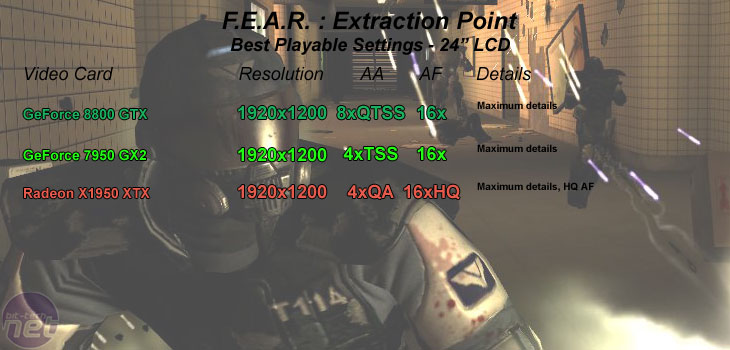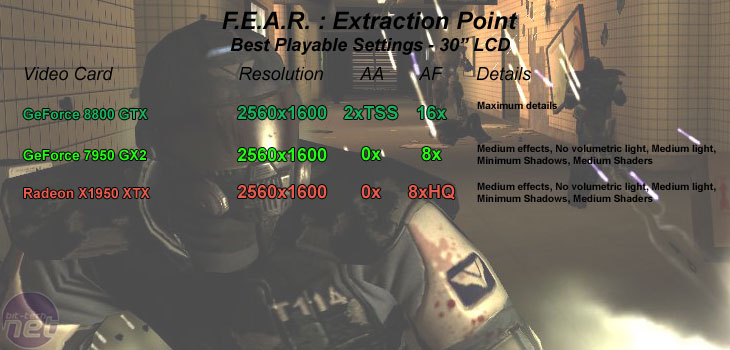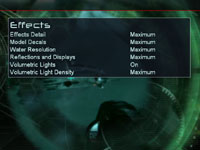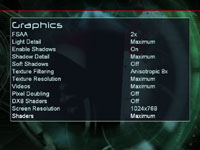
F.E.A.R. Extraction Point
Publisher: VU GamesWe used the full retail version of F.E.A.R. Extraction Point with our F.E.A.R. installation patched to version 1.07. Not surprisingly, the expansion pack is based on the same engine as F.E.A.R. and thus makes use of a lot of effects - including soft shadows, volumetric lighting, parallax mapping and particle effects, along with a slow-motion mode that really taxes today's top of the line GPU's. There's extensive use of high resolution textures. The walls are both bump mapped and parallax mapped to give a realistic feel to the brick walls that are a big feature of this title. Also, the world is incredibly destructible, which is made more realistic by parallax mapping.
In general, this is a graphically intense game and the most outstanding part of the graphics engine is undoubtedly the player character's shadow that is cast on the wall. It also has the most advanced A.I. that we have ever seen in a game engine to date - there are times when you'll find yourself with your pants down around your ankles with no where to go.
We did a manual run-through from the "Ambush" level, between two save game checkpoints - it was a section of intense outdoor gameplay that lasted around three minutes. We recorded frame over time graphs for all of our manual run-throughs because we found that the SloMo mode dropped our frame rates in to the low teens. We suspect this drop is part of Monolith's technique for slowing down the gameplay, as the game was not as jerky as the frame rate suggests.
________________________________________________________________________________
24" widescreen gaming:


In that respect, the GeForce 8800 GTX didn't make that much difference, although the game looked and felt incredibly smooth to play. The differences were much more subtle than in the other games we've looked at so far - at least at 1920x1200. The main quality differences were around the edges of shadows, where the higher sample rate on GeForce 8800 GTX took over and did a pretty awesome job. We can always strive for more though - it would have been nice if the game was playable with 16xQ AA enabled - unfortunately though, the gameplay wasn't quite smooth enough for our liking.
________________________________________________________________________________
30" widescreen gaming:


The bigger difference comes from the level of details the GeForce 8800 GTX is able to sustain smooth gameplay at. We didn't have to drop any of the in-game quality settings on GeForce 8800 GTX - it was smooth as butter with 2x transparency super-sampling AA enabled. The lack of volumetric light and the difference in both lighting and shadow quality is noticeable in a game where that relies on both. The Radeon X1950 XTX has a slight edge over the GeForce 7950 GX2 thanks to the higher quality AF, but there's not much in it in all honesty.

MSI MPG Velox 100R Chassis Review
October 14 2021 | 15:04












Want to comment? Please log in.